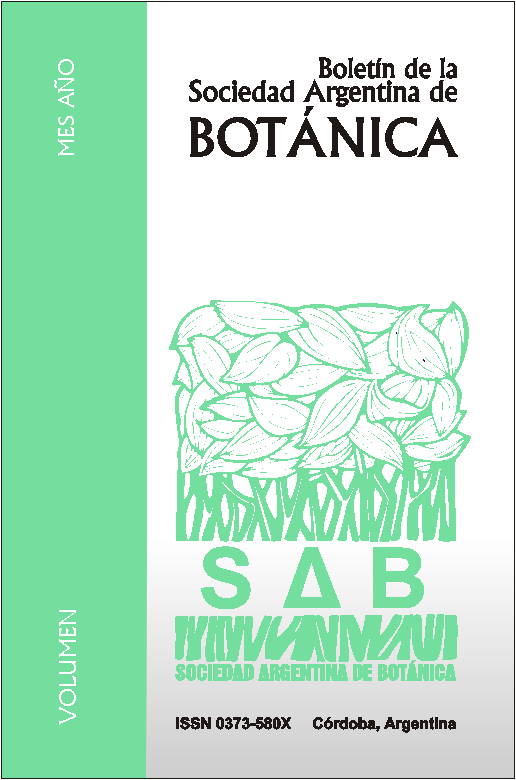Cladodes anatomy of Opuntia (Cactaceae) from the province of Buenos Aires (Argentina)
DOI:
https://doi.org/10.31055/1851.2372.v53.n3.21310Keywords:
Buenos Aires province, Opuntia, segment of stems, tissues.Abstract
The aim of this study was to deepen the knowledge of the cladodes anatomy of nine species of Opuntia that grow in the province of Buenos Aires, Argentina. Fresh and herbarium samples were prepared according to usual methods for light microscope. Histochemical techniques were performed to identify starch, mucilage and oxalate salts. The main traits found were: epidermis smooth and uniseriate, covered by a thin cuticle and epicuticular waxes; large (range 36-57 µm length) stomata in low density (range 21-27/ mm2), located at level respect to the rest of epidermal cells with a deep substomatal chamber; a multiseriate hypodermis with one crystal layer; the cortex with external chlorenchyma and internal hydrenchyma. The eustele presents different size of vascular bundles; in some species the large ones have a secretory duct adjacent to the phloem. Some species showed wide-band tracheids and a few presented fibres in their vascular bundles. Some characters (presence of fibres and ducts) may be a useful tool for plant identification. However, many open questions remain to be investigated such as the correlation of the environment factors with hypodermis, calcium oxalate crystals, and wide-band tracheids.Downloads
Published
Issue
Section
License
Provides immediate and free OPEN ACCESS to its content under the principle of making research freely available to the public, which fosters a greater exchange of global knowledge, allowing authors to maintain their copyright without restrictions.
Material published in Bol. Soc. Argent. Bot. is distributed under a Creative Commons Attribution-NonCommercial-ShareAlike 4.0 International license.





